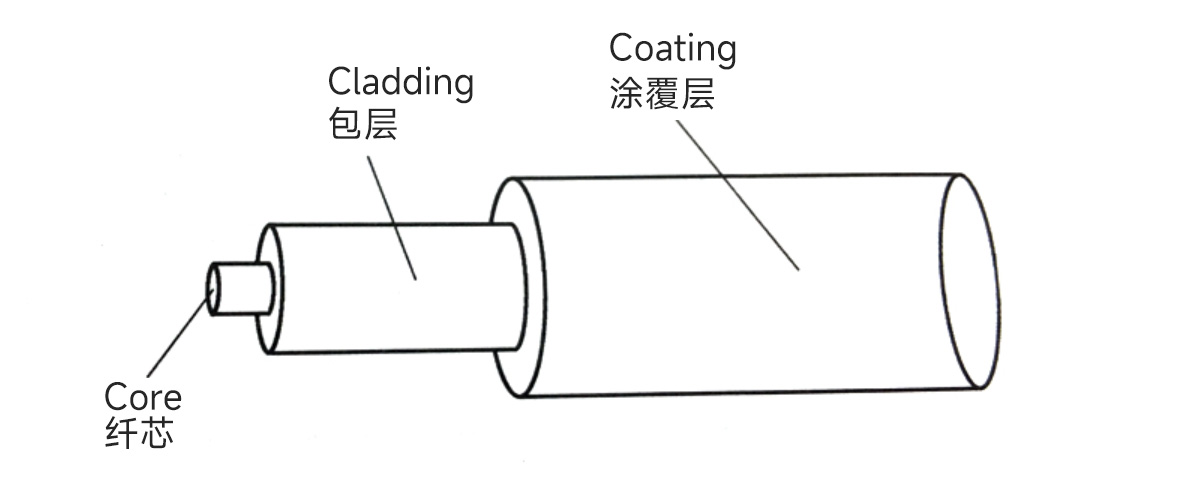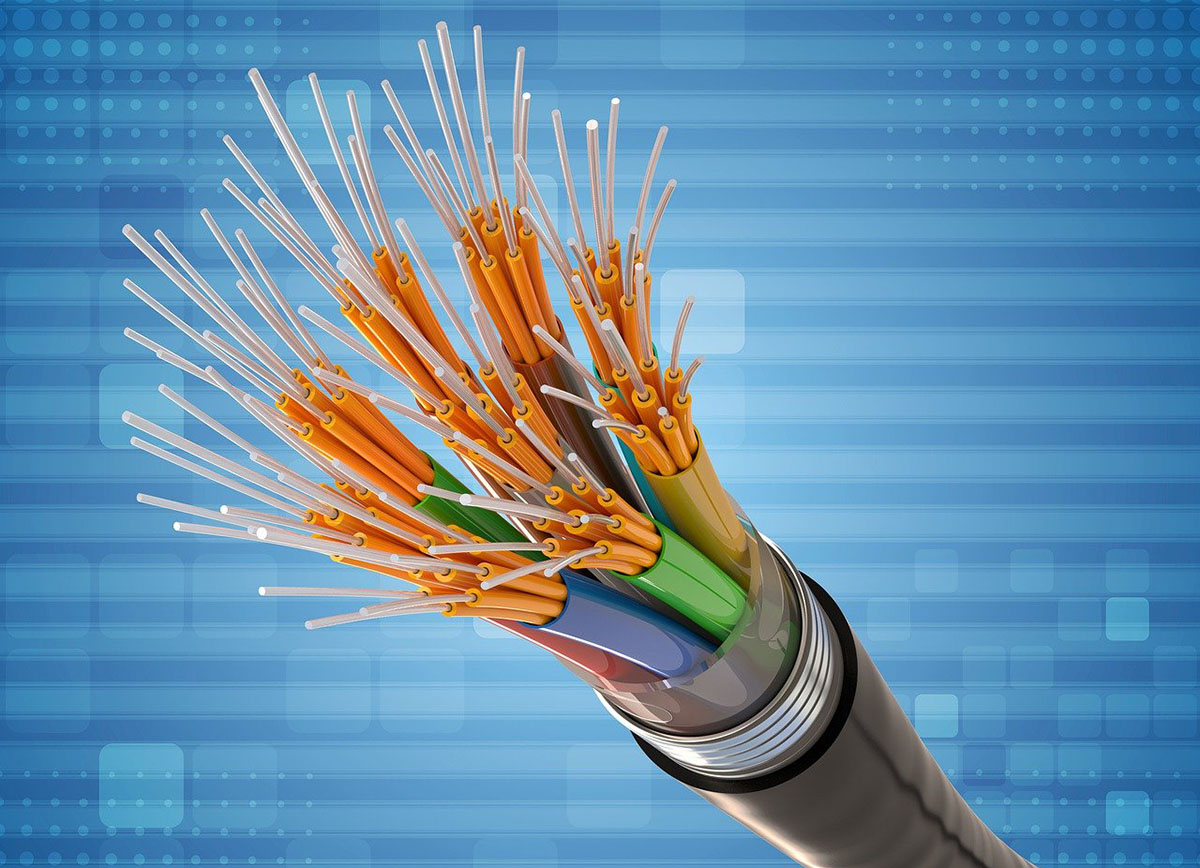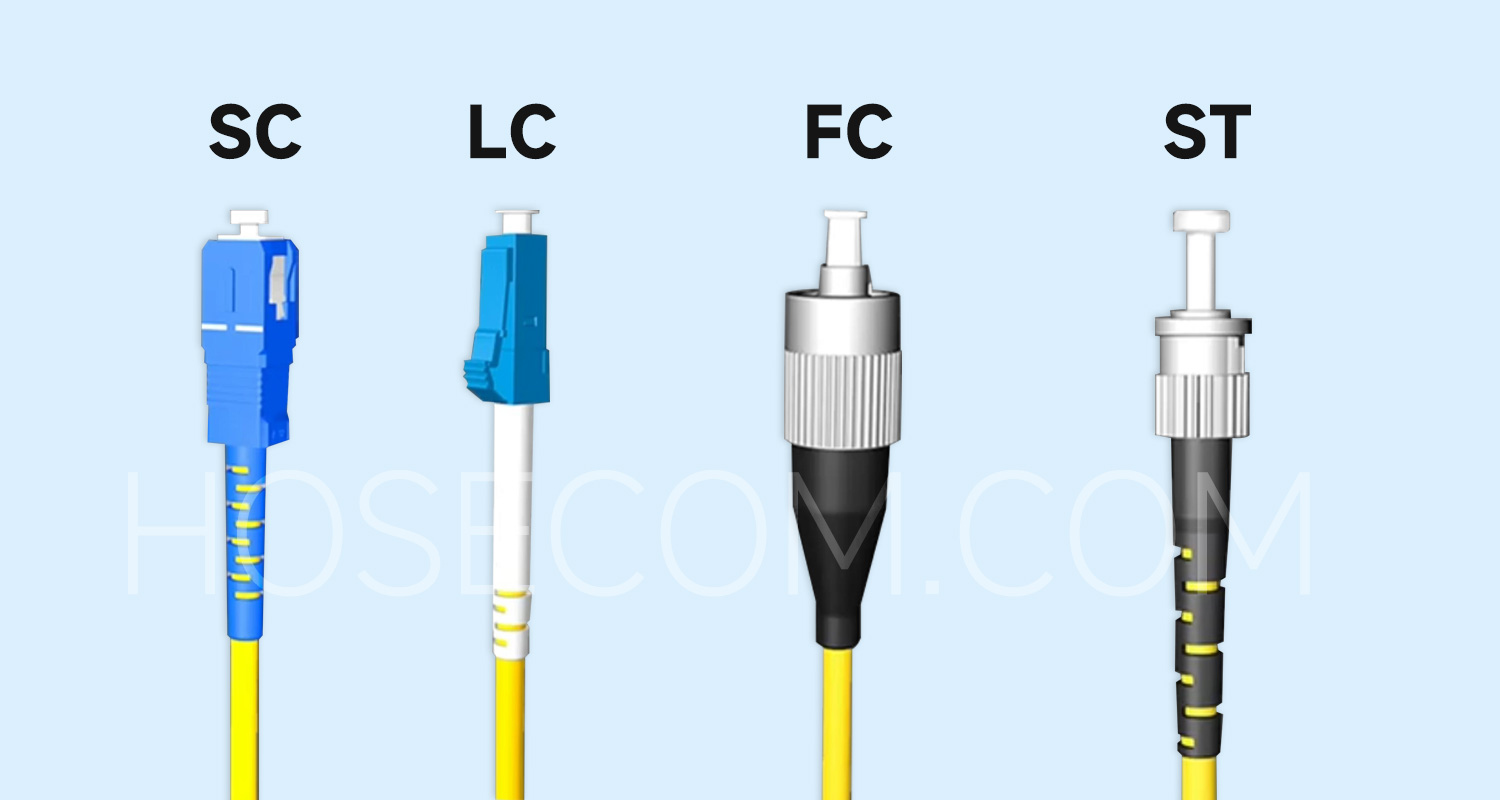Optical Fiber is a soft, slender silicon, glass or plastic wire capable of transmitting light signals. It is a light-based communication technology that uses the principle of total reflection of light to transmit information inside optical fibers.
The core is the central part of the optical fiber, which is made of a material with a high refractive index, usually silicon, plastic or glass. Light propagates in the core. Due to the difference in refractive index, total reflection occurs at the interface between the core and the external medium, thereby maintaining The propagation of light inside the fiber.
There are generally three types of optical fiber core materials:

The cladding is a layer of low-refractive index material covering the outside of the core. The role of the cladding is to ensure total reflection of light inside the core, preventing light from escaping and maintaining signal transmission. The cladding is usually made of a material with a lower refractive index, such as silicon (Si) or microsilica (Silica), to ensure the propagation of optical signals in the core.
The coating of an optical fiber is a protective layer located outside the cladding to enhance the strength and mechanical protection of the optical fiber. The outer cladding is usually made of polymer materials (such as polyester or nylon) and has a low refractive index to avoid leakage of optical signals.

The core diameter of Single Mode Fiber (SMF) is smaller, generally between 8.3-10 microns. Due to its small core diameter, optical signals can only propagate along one mode (that is, path). This feature reduces the effects of modal dispersion (the time delay caused by light signals traveling along different paths), providing clear signal transmission over long distances and high bandwidth applications.
------learn more from Viki------
Multimode Fiber (MMF) has a larger core diameter, generally between 50-62.5 microns. Due to its large core diameter, it can allow multiple modes of optical signals to propagate simultaneously. This means that optical signals can travel along different paths along the fiber, but also leads to the problem of modal dispersion.
------learn more from Viki------

| project | single mode fiber | multimode optical fiber |
| Core diameter | Core diameter is 9 µm | Core diameter is 50 µm or 62.5 µm |
| Cladding diameter 125 µm | Cladding diameter 125 µm | |
| wavelength | Operating wavelength is 1310 nm or 1550 nm | Operating wavelength is 850 nm or 1300 nm |
| bandwidth | high | relatively low |
| attenuation | Low | Relatively high |
| dispersion | less | Probably more |
| Transmission distance | long distance | shorter distance |
| cost | Manufacturing costs are higher | Manufacturing costs are relatively low |
| Higher installation costs | Installation costs are relatively low | |
| Application areas | Long-distance communication, high-performance data center | Short distance communication, local area network |
Due to the small core diameter of single-mode fiber, installation and connection are more difficult, requiring higher-precision equipment and more professional technicians, so its installation cost is higher. Single-mode optical fiber is more expensive to manufacture due to the higher precision required in the single-mode optical fiber manufacturing process. Therefore, compared to multimode fiber, the overall cost of single-mode fiber is higher than that of multi-mode fiber.

Generally speaking, due to the advantages of single-mode fiber's emission power and wavelength, the transmission distance of single-mode fiber is longer, generally up to tens of kilometers. The transmission distance of single-mode fiber is longer and the loss is smaller, which is suitable for transmission of large amounts of data. For applications that require data and maintain high signal quality, single-mode optical fiber is often used in long-distance optical cable communications, high-speed data center connections, intercity networks and other applications that require higher transmission distance and bandwidth. For example, in cross-regional communication networks, single-mode optical fiber can provide reliable high-speed connections, ensuring fast transmission of data and low latency. In addition, single-mode optical fiber is also widely used in some fields that have strict requirements on signal quality, such as medical equipment, aerospace and military fields.
Multimode optical fiber is suitable for short-distance optical communications and data transmission. The general coverage range is from a few hundred meters to several kilometers. It has advantages in local area networks, enterprise networks and short-distance data transmission. It is often used to build internal networks in offices, teaching buildings, industrial parks, etc. to meet the connection needs between devices. Multimode fiber is also suitable for some cost-sensitive scenarios, such as fiber-to-the-home (FTTH), because its cost is relatively low and it is easier to achieve large-scale deployment.

The fiber optic interface is a physical interface used to connect fiber optic cables. The principle is to utilize the total reflection of light from an optically dense medium into an optically sparse medium. Usually there are several types such as SC, LC, ST, FC, etc. FC is the abbreviation of Ferrule Connector. Its external reinforcement method is a metal sleeve and the fastening method is a screw buckle. The ST interface is usually used for 10Base-F, and the SC interface is usually used for 100Base-FX.
Optical fiber interfaces are divided into SC interfaces and LC interfaces based on the connector part of the optical cable. The SC interface is a 1GB interface, (SC=smart card) and the LC interface is a 2GB interface, (LC=Lucent Connector).
